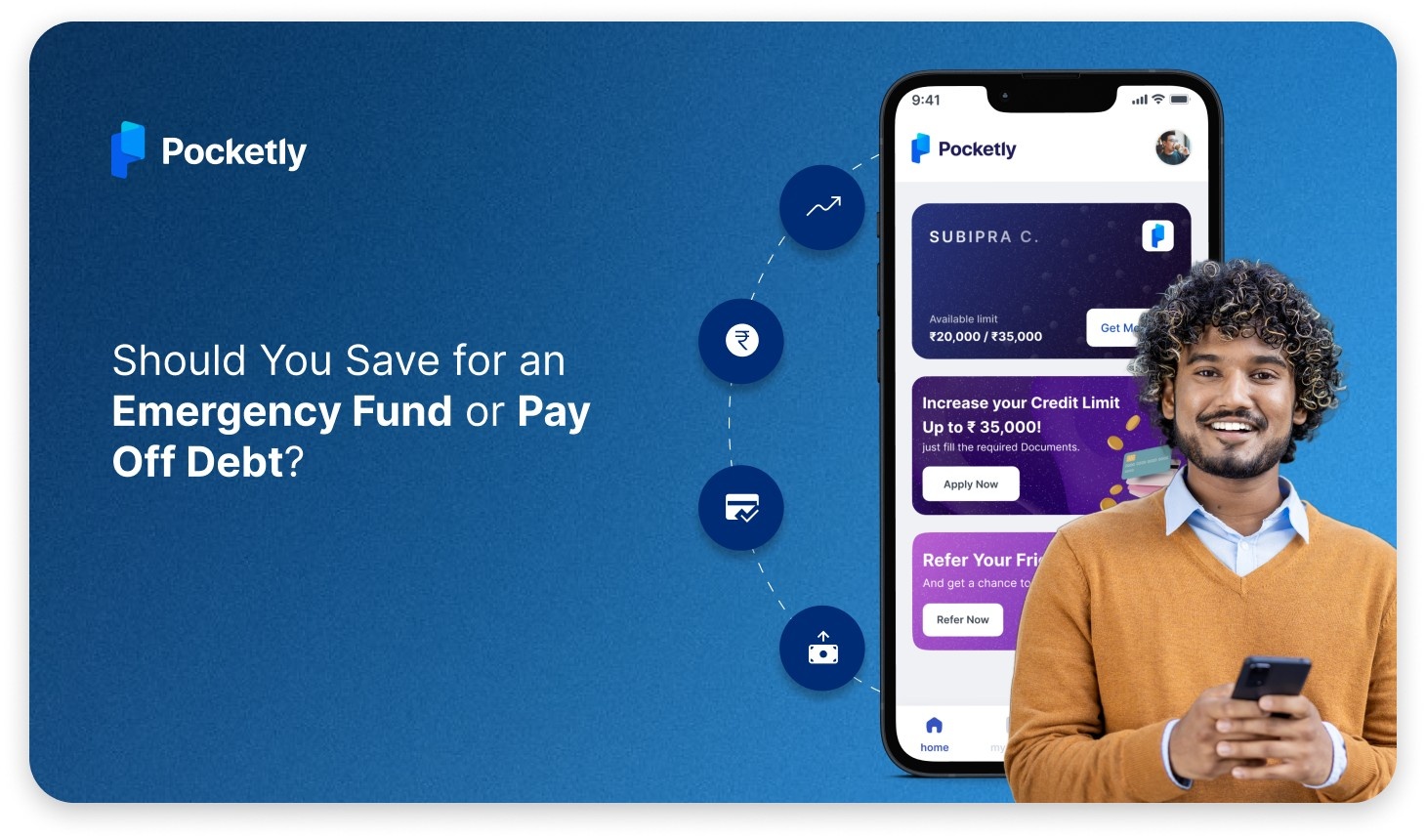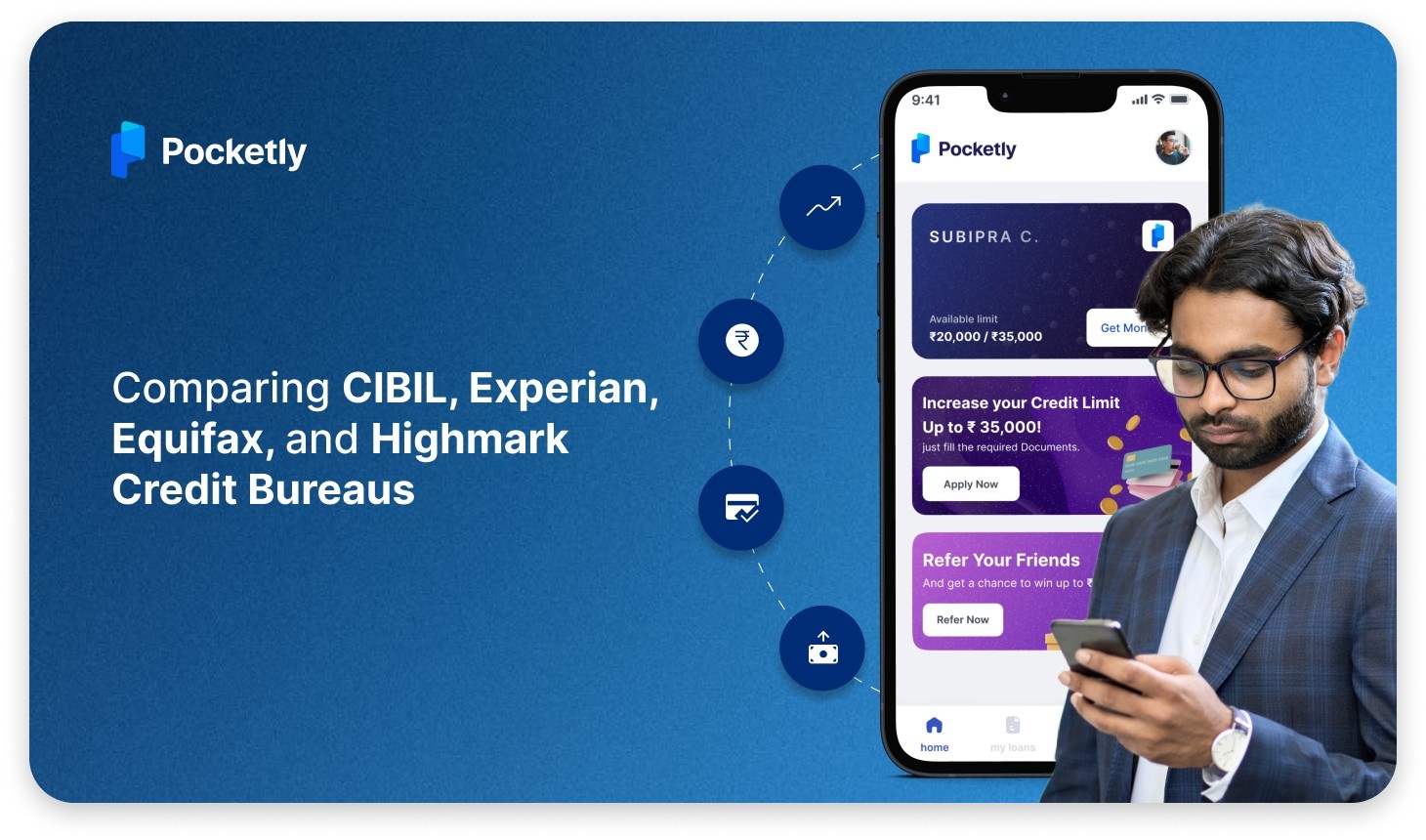
Taking out a loan can be a big decision, and understanding the terms is crucial to ensuring you're not paying more than you should. One of the key factors to consider is the interest rate, but not all interest rates are the same. You’ll likely come across two types: flat rate and reducing rate. But how do they differ, and which one should you choose?
Loan terms can be confusing, and the idea of paying back more than you borrowed can be daunting. A flat rate might seem simple, but it could end up costing you more over time. In contrast, a reducing rate loan is generally more cost-effective as interest is charged only on the remaining loan balance. While it can lead to significant savings, it’s a bit more complex to understand.
In this blog, we'll break down the differences between these two interest rates and explain how they affect your monthly payments. By the end, you'll know which option works best for your financial situation and avoid any surprises down the road.
What are Flat and Reducing Interest Rates?
When you're looking to borrow money, interest rates play a significant role in determining how much you'll repay over the life of the loan. So, before you commit, it's important to know the difference between flat and reducing interest rates.
Each option affects the total cost of the loan in different ways, depending on your borrowing habits and financial situation.
Flat Interest Rate
A flat interest rate means that the interest is calculated on the original loan amount throughout the entire loan term. Unlike a reducing interest rate, which changes as you make repayments, the flat rate remains constant, and interest is charged on the full loan amount, regardless of how much of the loan you’ve already repaid.
Let’s say you borrow ₹20,000 at a flat interest rate of 10% per annum for 12 months.
- Loan amount: ₹20,000
- Interest rate: 10% flat
- Loan tenure: 12 months
Interest: 10% of ₹20,000 = ₹2,000
Total Repayment: ₹20,000 (Principal) + ₹2,000 (Interest) = ₹22,000
Monthly EMI: ₹22,000 ÷ 12 months = ₹1,833.33
With a flat rate, you will pay ₹1,833.33 every month, and the total interest of ₹2,000 will remain the same, regardless of the repayments made.
Characteristics of Flat Interest Rate
- Fixed interest amount: The interest is calculated on the original loan amount and stays the same throughout the tenure.
- Predictable payments: Monthly payments remain consistent, making it easy to plan your budget.
- Higher overall cost: Since interest is charged on the full loan amount, you may end up paying more in total interest compared to a reducing balance method.
- Simplicity: Flat interest rates are easier to understand and calculate, with no surprises or changes during the loan period.
Reducing Interest Rate
In contrast, the reducing interest rate method calculates interest based on the outstanding balance of your loan. As you repay the loan, the principal reduces, which in turn reduces the interest amount charged on the remaining balance. This means that you end up paying less interest over time.
Let’s use the same loan amount and tenure but with a reduced interest rate of 10% per annum for 12 months.
- Loan amount: ₹20,000
- Interest rate: 10% per annum
- Loan tenure: 12 months
In the reducing balance method, interest is calculated monthly on the outstanding balance.
For the first month:
- Interest for first month: ₹20,000 x 10% ÷ 12 = ₹166.67
- Total EMI for first month: ₹1,833.33 (Principal) + ₹166.67 (Interest) = ₹2,000
As the balance reduces, the interest for the subsequent months will decrease accordingly. For example, after the first payment, the outstanding loan balance will be ₹18,167.
The monthly EMI amount remains the same (₹1,833.33), but the amount of interest included in each EMI decreases over time, leading to a lower total interest paid by the end of the loan term.
Characteristics of Reducing Interest Rate:
- Decreasing interest payments: Interest is calculated on the outstanding balance, so your payments reduce as you repay the loan.
- Lower overall cost: Since the interest is calculated on the remaining balance, you end up paying less interest in total compared to a flat rate loan.
- Higher initial EMI: Your initial payments might be higher than a flat rate loan because of the reducing balance, but the interest cost decreases over time.
- More flexible: This method is better suited for those who can afford higher initial payments and want to reduce the total cost of the loan.
For a step-by-step guide on how to pre-close your personal loan, including understanding prepayment charges and how it can boost your credit score, check out the article: "Personal Loan Pre-Closure: Charges and Procedure."
Now that we've explored what flat and reducing interest rates are, it's important to understand how they compare. These two types of interest rates may seem similar at first glance, but they can have quite different impacts on your total repayment amount, monthly EMIs, and overall cost of the loan.
Comparison Between Flat Rate and Reducing Rate
You can make a more informed decision about which works best for your financial situation if you know the difference between flat and reducing interest rates.
Interest Calculation
The fundamental distinction lies in how the interest is computed. In a flat rate loan, interest is calculated on the entire principal amount throughout the loan tenure, regardless of how much of the principal you have already repaid.
For instance, if you take a loan of ₹1,00,000 at a 10% flat rate for five years, the interest charged every year remains ₹10,000, totaling ₹50,000 over the entire period. This method does not account for the decreasing principal as you make repayments, which often leads to higher overall interest payments.
In contrast, reduced-rate loans calculate interest on the outstanding loan balance, which decreases with each EMI payment. Taking the same ₹1,00,000 loan at a 10% reducing rate for five years, the interest in the first year might be ₹10,000, but as you pay down the principal, the interest amount reduces accordingly.
This approach is more equitable since you pay interest only on the amount you actually owe at any given time, making it more cost-effective over the loan tenure.
EMI Dynamics
This difference in interest calculation also affects the EMI (Equated Monthly Installment) structure. Flat rate loans have fixed EMIs that remain consistent throughout the loan term, making it easier for borrowers to plan their monthly budgets.
For example, if your EMI is ₹2,500, you will pay this amount every month until the loan is fully repaid. This predictability is often preferred by borrowers who want stable payments without surprises.
On the other hand, the reducing rate loans start with higher EMIs, which gradually decrease as the principal reduces. Initially, you might pay ₹2,800 per month, but by the end of the tenure, your EMI could drop to ₹1,800.
This structure suits borrowers who can manage higher payments initially and want to benefit from lower interest costs in the long run.
Total Interest Payable
When it comes to the total interest payable, flat rate loans generally result in a higher interest burden. Since interest is calculated on the full principal amount for the entire tenure, you might end up paying nearly double the effective interest rate compared to the nominal rate. For example, on the ₹1,00,000 loan over five years at a 10% flat rate, the total interest would be ₹50,000, which is quite substantial.
Conversely, reducing rate loans typically have a lower total interest cost because the interest is recalculated on the decreasing outstanding balance. For the same loan amount and tenure at a 10% reducing rate, the total interest might be around ₹27,500, representing significant savings.
Impact of Loan Tenure
The loan tenure impacts these two types of loans differently. In flat-rate loans, the tenure has little effect on the total interest because the interest is fixed and does not change with the repayment schedule. Whether you repay over three years or five years, the interest calculation remains the same, which means there is no financial advantage to repaying early.
On the contrary, reducing rate loans are highly sensitive to tenure changes. A longer tenure means you pay more interest upfront, but as you repay the principal, the interest burden decreases. This structure encourages early repayment, as making extra payments reduces the outstanding principal and thereby lowers the total interest payable.
Monthly Repayment Amount
Monthly repayment amounts also differ in their predictability and flexibility. Flat rate loans offer the same EMI every month, which simplifies financial planning and cash flow management. Borrowers know exactly how much they need to pay each month, which reduces the risk of missed payments.
Reducing rate loans, however, have EMIs that vary over time, starting higher and gradually decreasing. This can be a bit challenging for some borrowers to manage initially, but it becomes easier as the loan progresses and the payments reduce.
Simplicity
From a simplicity perspective, flat-rate loans are straightforward and easy to understand. The interest calculation is simple, and borrowers can easily estimate the total cost of the loan upfront. However, this simplicity can be misleading, as it does not reflect the true cost of borrowing.
Reducing rate loans, while more accurate in reflecting the actual interest cost, involves more complex calculations. The interest is recalculated each month based on the outstanding balance, which can make it harder for borrowers to predict the exact total cost without detailed amortization schedules.
Flexibility
Flexibility is another important consideration. Flat-rate loans offer little advantage if you want to repay the loan early, because the interest is fixed on the original principal regardless of early payments. This means you won’t save much on interest by prepaying.
Reducing rate loans, however, are much more flexible. Early repayments directly reduce the principal, which in turn lowers the interest burden. This makes reducing rate loans attractive for borrowers who anticipate making lump sum payments or want to close their loans sooner.
Cost Effectiveness
In terms of cost-effectiveness, flat rate loans tend to be more expensive over the long term due to the higher interest charges. Borrowers often underestimate the effective interest rate they are paying because the flat rate method masks the true cost. Reducing rate loans are generally more economical since interest is charged only on the remaining balance, resulting in lower overall interest payments.
Transparency
Transparency is a mixed bag for both types. Flat-rate loans offer clear upfront information about the total interest cost for the entire loan term, which can be reassuring for borrowers. However, this clarity comes at the cost of accuracy, as the flat rate does not reflect the actual interest expense.
Reducing rate loans provide a more realistic picture of the loan cost, but because interest fluctuates with the outstanding balance, the total cost is less predictable and may require careful monitoring or the use of amortization tables.
Application
Ultimately, flat-rate loans are best suited for borrowers who prefer stable, predictable payments and simplicity in understanding their loan terms. They are ideal for those who do not plan to make early repayments and want to budget with certainty.
On the other hand, reduced-rate loans are more appropriate for borrowers who are comfortable with higher initial payments and are focused on saving interest costs over the long run. These borrowers often appreciate the flexibility to make early repayments and reduce their interest burden.
In summary, while flat rate loans offer simplicity and predictability, they come at a higher cost. Reducing rate loans, though more complex, provide a fairer and more cost-effective way to borrow, especially for those who can manage variable payments and want to optimize their loan repayment strategy.
The table below showcases the differences between flat rate and reducing rate.
| Factor | Flat Rate | Reducing Rate |
|---|---|---|
| Interest Calculation | Calculated on the full loan amount throughout the term | Calculated on the outstanding loan balance, reducing as repayments are made |
| EMI Dynamics | Fixed and consistent throughout the loan term | Initial EMIs are higher, but they decrease as the loan balance reduces |
| Total Interest Payable | Higher overall interest cost due to flat calculation on the full loan amount | Lower total interest cost as interest decreases with the outstanding balance |
| Impact of Loan Tenure | Little effect on total interest, as the interest remains fixed | Significant effect on interest cost, as a longer tenure means more interest early on, but decreases over time |
| Monthly Repayment Amount | Same amount every month, making it easy to plan | Varies: Higher initial payments, but they decrease as the balance reduces |
| Simplicity | Simple and predictable, easy to calculate and understand | It can be more complex to understand, as the interest is recalculated each month |
| Flexibility | Less flexible, no advantage for early repayment | More flexible: Early repayments reduce the interest burden |
| Cost-Effectiveness | Generally, more expensive in the long run due to higher interest charges | More cost-effective as interest is charged only on the remaining balance |
| Transparency | Clear upfront total interest cost for the entire loan term | Interest fluctuates with loan balance, making the total cost less predictable |
| Best for | Borrowers who prefer stable, predictable payments | Borrowers who are comfortable with higher initial payments and want to save on interest in the long run |
Now that we've explored the key differences between flat and reducing interest rates, you might be wondering: which one is the right choice for you? The answer depends on your personal financial situation, your repayment ability, and your long-term goals.
Choosing the right interest rate isn’t just about the numbers – it’s about how the loan fits into your overall financial plan.
How to Make the Right Choice Between Flat Rate and Reduced Rate
Choosing the right interest rate method is essential to ensure that your loan suits both your immediate needs and long-term financial goals. While both flat and reducing interest rates have their advantages, the decision largely depends on your unique financial situation, repayment ability, and the amount you intend to borrow.
Here’s a guide to help you make the right choice:
1. Consider Your Loan Amount and Tenure
- Small Loans & Short Tenure: If you're borrowing a small amount for a short period, a flat rate loan might be more suitable. The fixed interest amount can make monthly payments predictable, and the overall cost won’t vary much with the loan duration.
- Large Loans & Long Tenure: If you need a larger loan or a longer repayment period, a reduced-rate loan could be more cost-effective. With lower overall interest paid over time, you’ll end up saving more as your loan balance decreases with each EMI.
2. Evaluate Your Cash Flow and Repayment Ability
- Fixed, Predictable Payments: If you prefer a fixed repayment structure with consistent monthly payments for better budgeting and financial planning, a flat-rate loan might be a better fit. It provides stability, especially for borrowers who may not be able to adjust their monthly outflows easily.
- Ability to Handle Fluctuating Payments: If you’re comfortable with initially higher payments but want to reduce your loan cost in the long run, reducing-rate loans are a good choice. This option is best for borrowers who expect to make early repayments or those who can handle slightly higher initial EMIs.
3. Focus on Your Long-Term Financial Goals
- Maximizing Savings: If you’re aiming to minimize your total loan cost and reduce the interest burden, the reducing rate method is the way to go. By paying interest only on the remaining balance, you’ll pay less interest over the course of the loan.
- Predictable Costs: If your goal is to lock in a predictable cost for the entirety of the loan term, a flat-rate loan can offer the simplicity and peace of mind you’re looking for. This is ideal if you prefer to know upfront exactly how much interest you'll pay.
4. Assess Flexibility for Early Repayments
- If You Plan to Repay Early: Reducing rate loans are beneficial if you intend to make additional repayments or settle the loan early. You’ll save on interest since the amount is recalculated based on the remaining balance.
- Fixed Cost Preference: If you’re not focused on making early repayments and prefer the simplicity of a fixed monthly payment, a flat rate loan may suit your needs better.
5. Compare Loan Offers and Interest Rates
It’s also crucial to compare different loan offers from various lenders. Even if you have a preference for either a flat or a reduced interest rate, some lenders may offer more competitive rates and flexible terms, which could influence your decision.
6. Take Advantage of Tools and Calculators
Before finalising your decision, use online loan calculators to estimate your monthly repayments and total interest costs for both flat and reducing interest rate loans. This can give you a clearer picture of how each option will impact your budget and help you choose the best one for your financial situation.
Choosing the right interest rate is just one aspect of responsible borrowing. It’s equally important to avoid overextending your finances and falling into a debt trap. Recognizing warning signs and adopting smart repayment strategies can help you maintain financial health. For practical tips and strategies to avoid the debt trap, read: "What is Debt Trap and How to Avoid It."
How Pocketly Makes Borrowing Simple and Affordable
When it comes to loans, choosing between flat and reducing interest rates can often leave you juggling between different options. But with Pocketly, you don’t have to worry about complex interest rate calculations.
Pocketly offers competitive interest rates starting at just 2% per month, making it easier for you to find a loan that suits your needs without being overwhelmed by the interest rate model.
What sets Pocketly apart is its seamless loan experience designed for young, tech-savvy borrowers like you. Here's why Pocketly should be at the top of your list when looking for a personal loan:
- Competitive Interest Rates: With 2% per month interest rates, Pocketly offers affordable loan options, ensuring you’re not burdened by high-interest costs. This makes it easier to compare and understand what you're paying for, without getting caught up in the complexities of flat or reducing interest rates.
- Instant Loan Disbursals: No more waiting for days to receive your funds. Pocketly provides instant loan transfers directly into your bank account, making it convenient and fast to access the money you need when life throws unexpected expenses your way.
- No Collateral Required: Pocketly understands that young borrowers often don’t have assets to offer as collateral. That’s why Pocketly provides unsecured loans, so you don’t have to worry about pledging anything in exchange for your loan.
- Transparent Loan Terms: Pocketly ensures there are no hidden fees or surprises. From the interest rate to the processing fee, everything is clearly outlined upfront. This transparency makes it easier for you to plan your repayments and manage your finances efficiently.
By removing the hassle of comparing complex interest rate models and offering simple, straightforward loan terms, Pocketly makes borrowing more accessible and manageable. Whether you’re a student, a salaried individual, or a self-employed professional, Pocketly is here to help you access the funds you need with ease and confidence.
Final Words!
Selecting the right interest rate method for your loan is crucial to managing your finances effectively and minimizing your overall repayment burden. Understanding the difference between flat rate and reducing rate loans empowers you to make informed decisions that align with your financial goals.
Ultimately, the best choice depends on your loan amount, tenure, cash flow, and long-term financial objectives. Always compare loan offers, use online calculators to estimate your repayments, and consider your ability to handle fluctuating EMIs before committing.
When it comes to making borrowing simple, transparent, and affordable, Pocketly stands out as a trusted solution for today’s young and tech-savvy borrowers. Whether you’re a student, a salaried professional, or self-employed, Pocketly empowers you to borrow confidently and manage your finances with ease.
Ready to experience hassle-free borrowing with competitive interest rates? Download Pocketly today and enjoy instant loans with transparent terms, no collateral requirements, and interest rates starting at just 2% per month! Download Pocketly for Android or Download Pocketly for iPhone. Take control of your finances with just a few taps – borrow smarter, not harder!

















